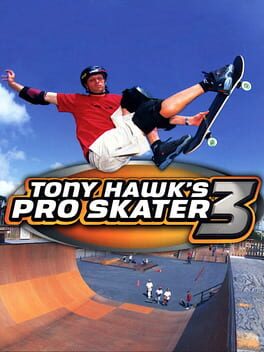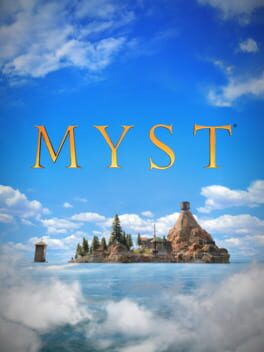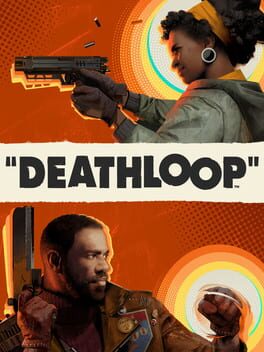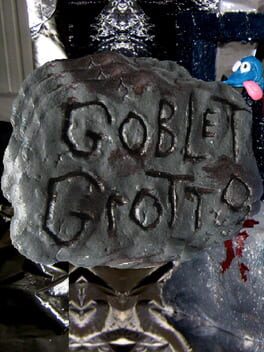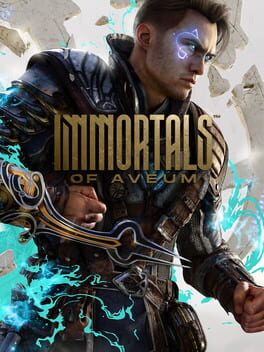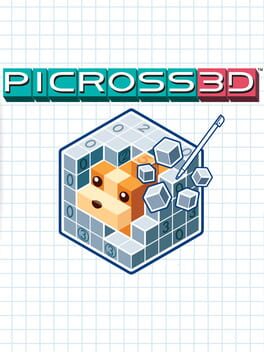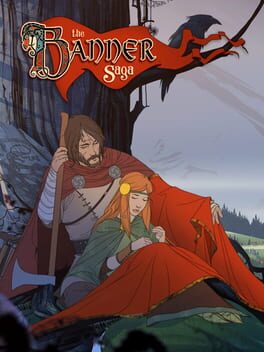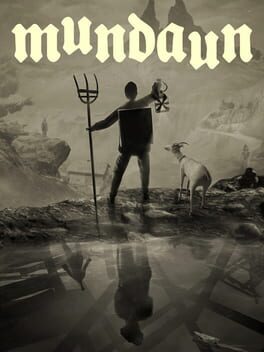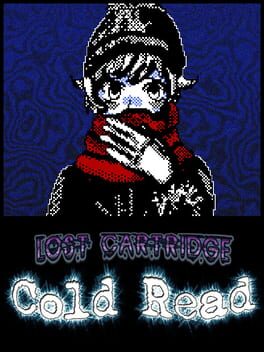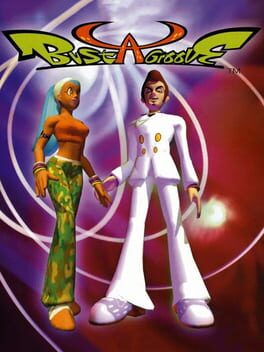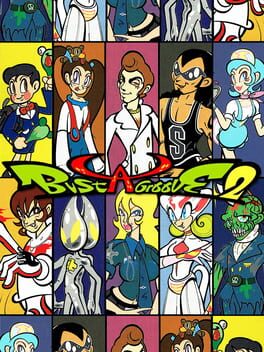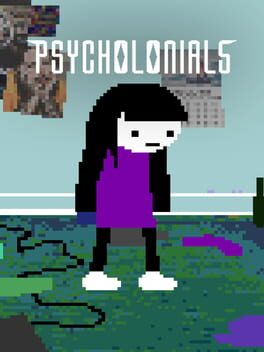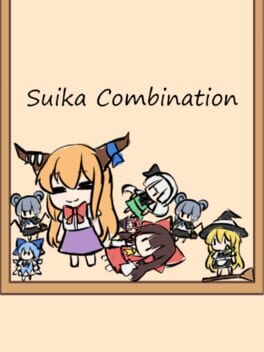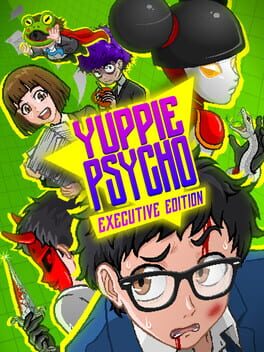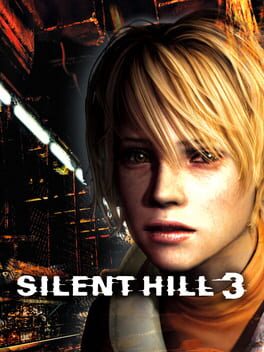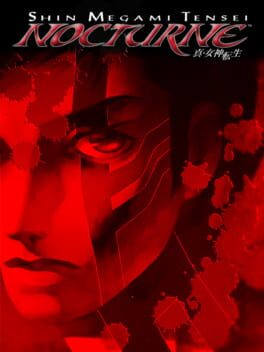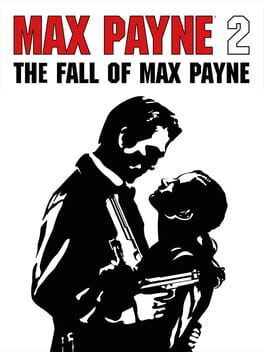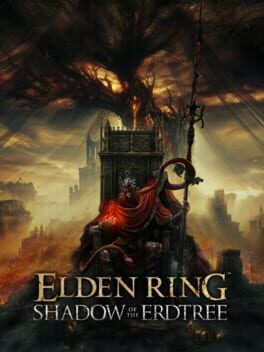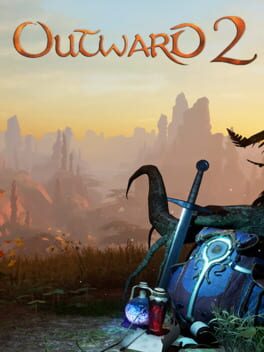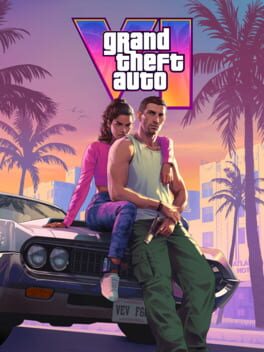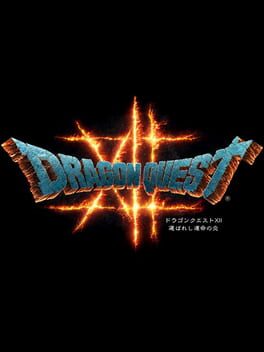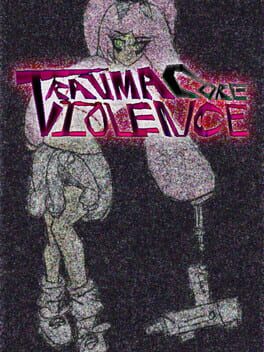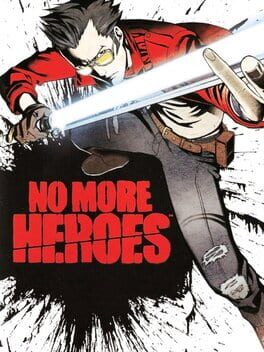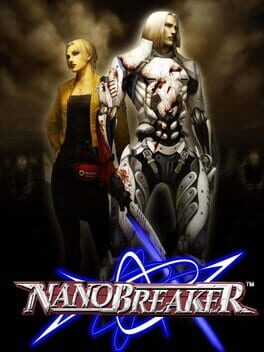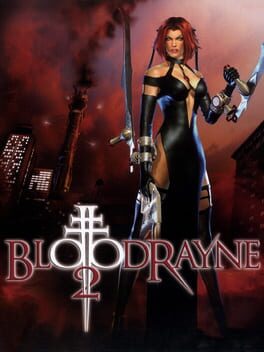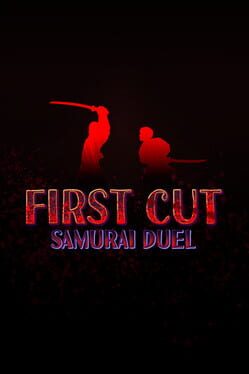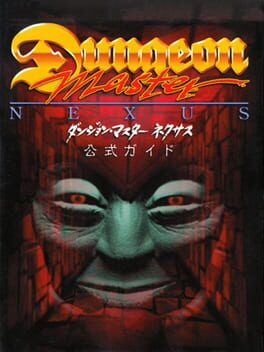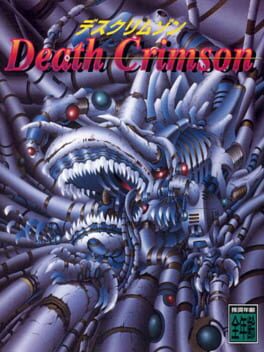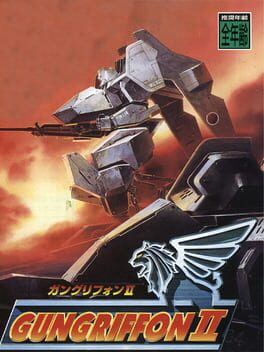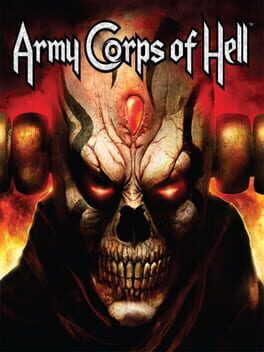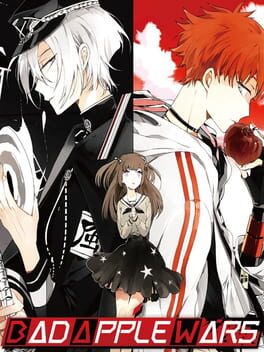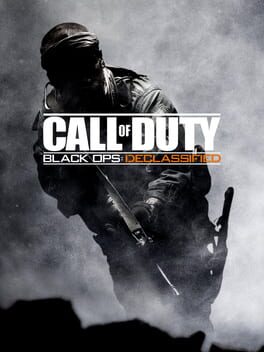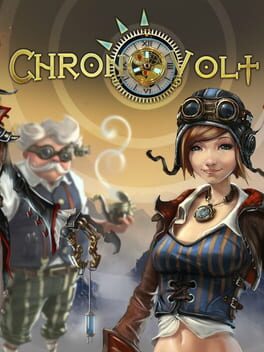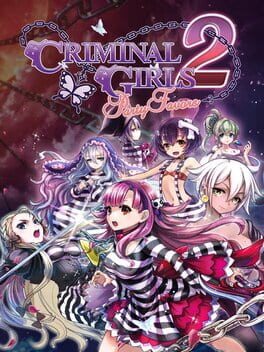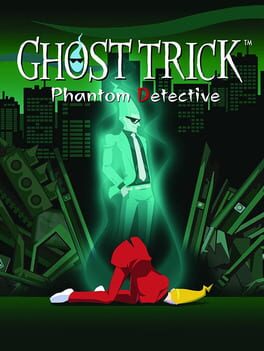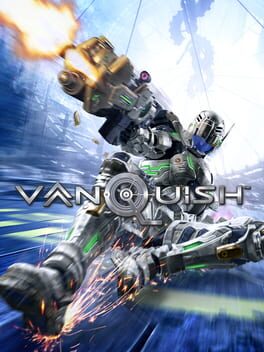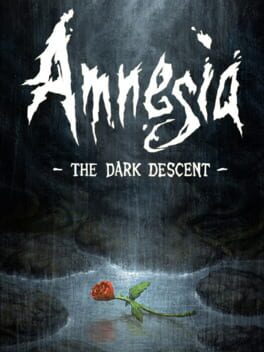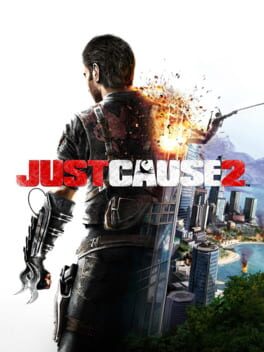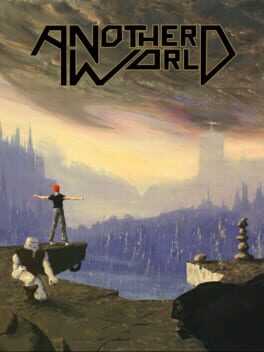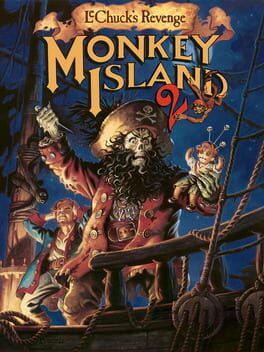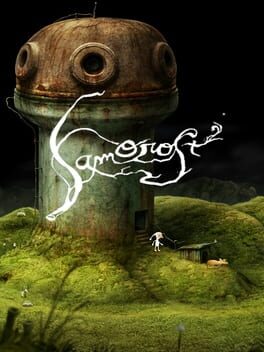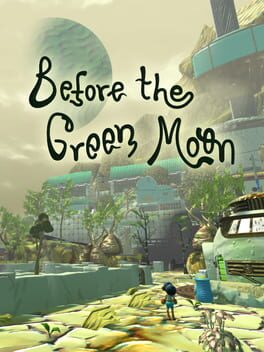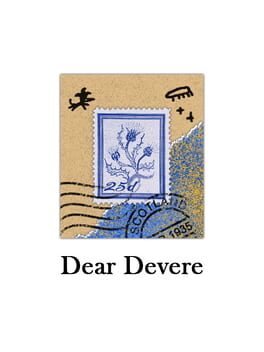triales
BACKER
75 reviews liked by triales
this was the only tony hawk game i played for years. imagine how shocking it was when i listened to the full version of "ace of spades" for the first time last year and discovered that the song had sections other than its chorus and "DON'T FORGET THE JOKER". the soundtrack i've had stuck in my head since i was like 12 was all weird truncated edits made to fit on a cartridge. i didn't even know this was a ps2 game!
Myst
2020
about three years ago i tried playing this game and couldn't find the right approach to it. no doubt in part due to my inability to find catherine's letter (which also happened again here with equivalent time wasted) but i was also refusing to play ball with myst's framework. i had no desire to read the books in the library, didn't catch the impetus from atrus' message to catherine and as a result i never really found a foot in to the mystery of the island of myst, and i quickly lost interest.
this second go around i found it remarkable that once i actually got to another world, my progression snowballed and i was able to finish the whole game in two quick sessions on the same day i started it. myst is surprisingly not a difficult game, but it definitely requires that certain calibration towards it. what comes after isn't hurt in this way, it's still an incredibly charming world with a very unique aesthetic. it still has a surprisingly nuanced story effectively told entirely by exploration of environments. we read in the library of atrus the beauty of these worlds, these "ages", and what happened in them to better the lives of these people. and then you as the player see them in their total desolation and abandonment.
the remake of riven is a few weeks away at this point, and i cannot wait to continue what has started here.
this second go around i found it remarkable that once i actually got to another world, my progression snowballed and i was able to finish the whole game in two quick sessions on the same day i started it. myst is surprisingly not a difficult game, but it definitely requires that certain calibration towards it. what comes after isn't hurt in this way, it's still an incredibly charming world with a very unique aesthetic. it still has a surprisingly nuanced story effectively told entirely by exploration of environments. we read in the library of atrus the beauty of these worlds, these "ages", and what happened in them to better the lives of these people. and then you as the player see them in their total desolation and abandonment.
the remake of riven is a few weeks away at this point, and i cannot wait to continue what has started here.
Deathloop
2021
Let’s make a time loop game. First, we need to establish a mystery, something that’ll really play into the strength of the format, with something new to discover each loop. Since we at Arkane have mastered the magical assassin concept, we’ll blend the ideas, and have players discover how to assassinate a list of targets across a repeating day.
But how do we prevent players from just lucking into a solution, going to the right places and beating the game in two hours? Dishonored was already criticized for being short, and if even 1% of players beat the game in one run, we’ll never hear the end of it. So, we’ll have to force some repetition: necessary codes will be mutually-exclusive, so players will have to loop at least a few times before they’re able to unlock the ending. We’ll author a linear sequence of events that will guide the player and pace the experience.
What about players who don't like the repetition though? It won’t take long for people to get tired of repeatedly fetching their favorite weapons. To solve that, we could have players preserve their loadout between runs… but that would mean that we need to add a little more depth to it, so they don’t just gather everything once and stop caring. The weapons could have randomized bonuses like a looter-shooter, and collectible trinket buffs as well. Adding in character buffs and loot rarity would ensure that there’s always something new to find each run.
Of course, that will work well with the invasion-based multiplayer. Everyone will be fighting a unique opponent, which is great. We can also kill two birds with one stone by limiting the amount of powers players can equip at one time, further emphasizing unique approaches and making gunfights easy to follow. Speaking of limitations however, there will need to be some sacrifices in the realm of map design, since having a one-on-one fight across sprawling maps with load zones would be a nightmare, especially if hiding on rooftops and turning invisible is on the table. So, we won’t have events progress in real time, just in a single time-of-day per mission, because we won’t know how long those encounters may last. It also wouldn’t be good to lock weapons and buffs behind the multiplayer system, because that would let expert assassins steamroll new players. As a final failsafe, we’ll include an option to only play single player, in case it devolves into an invisible sniper camp fest.
Great. This design makes sense from front to back. We’ve walked through all the decisions and how they fit with all the others. We’ll have a time loop game where… players preserve everything from loop to loop, with no time pressure to navigate a linear sequence of events. We’ll prevent players from being bored with excessive repetition by… having them farm currency and random items. They’ll do that until they feel comfortable with tackling the big challenges and handling multiplayer invasions, because losing to an invader resets all the progress on your current loop. You’ll only ever do it when you’re not trying to focus on completing the story, since multiplayer has no benefits compared to isolating yourself in single player.
Hold on, how did this happen? We made decisions that made perfect sense; why is everything so wrong? Why do all our systems work against themselves? I guess it’s because we started with some good ideas, like the time loop assassin stuff and spy-versus-spy multiplayer invasions, but then immediately focused on how to sterilize those core concepts for people who aren’t interested. We made a time loop game and then removed all the time pressure! We took the magical powers and intricate maps we’re great at creating, and saddled them enough limitations to where they're worse than our old games! We made those sacrifices so the multiplayer would work, and then disincentivized engaging with it, killing the point and the playerbase in one shot! Next time we try this, we gotta keep it simple. Focus on what we think is cool and commit to it. Start from scratch. Ok.
Let’s make a time loop game.
But how do we prevent players from just lucking into a solution, going to the right places and beating the game in two hours? Dishonored was already criticized for being short, and if even 1% of players beat the game in one run, we’ll never hear the end of it. So, we’ll have to force some repetition: necessary codes will be mutually-exclusive, so players will have to loop at least a few times before they’re able to unlock the ending. We’ll author a linear sequence of events that will guide the player and pace the experience.
What about players who don't like the repetition though? It won’t take long for people to get tired of repeatedly fetching their favorite weapons. To solve that, we could have players preserve their loadout between runs… but that would mean that we need to add a little more depth to it, so they don’t just gather everything once and stop caring. The weapons could have randomized bonuses like a looter-shooter, and collectible trinket buffs as well. Adding in character buffs and loot rarity would ensure that there’s always something new to find each run.
Of course, that will work well with the invasion-based multiplayer. Everyone will be fighting a unique opponent, which is great. We can also kill two birds with one stone by limiting the amount of powers players can equip at one time, further emphasizing unique approaches and making gunfights easy to follow. Speaking of limitations however, there will need to be some sacrifices in the realm of map design, since having a one-on-one fight across sprawling maps with load zones would be a nightmare, especially if hiding on rooftops and turning invisible is on the table. So, we won’t have events progress in real time, just in a single time-of-day per mission, because we won’t know how long those encounters may last. It also wouldn’t be good to lock weapons and buffs behind the multiplayer system, because that would let expert assassins steamroll new players. As a final failsafe, we’ll include an option to only play single player, in case it devolves into an invisible sniper camp fest.
Great. This design makes sense from front to back. We’ve walked through all the decisions and how they fit with all the others. We’ll have a time loop game where… players preserve everything from loop to loop, with no time pressure to navigate a linear sequence of events. We’ll prevent players from being bored with excessive repetition by… having them farm currency and random items. They’ll do that until they feel comfortable with tackling the big challenges and handling multiplayer invasions, because losing to an invader resets all the progress on your current loop. You’ll only ever do it when you’re not trying to focus on completing the story, since multiplayer has no benefits compared to isolating yourself in single player.
Hold on, how did this happen? We made decisions that made perfect sense; why is everything so wrong? Why do all our systems work against themselves? I guess it’s because we started with some good ideas, like the time loop assassin stuff and spy-versus-spy multiplayer invasions, but then immediately focused on how to sterilize those core concepts for people who aren’t interested. We made a time loop game and then removed all the time pressure! We took the magical powers and intricate maps we’re great at creating, and saddled them enough limitations to where they're worse than our old games! We made those sacrifices so the multiplayer would work, and then disincentivized engaging with it, killing the point and the playerbase in one shot! Next time we try this, we gotta keep it simple. Focus on what we think is cool and commit to it. Start from scratch. Ok.
Let’s make a time loop game.
Goblet Grotto
2012
Mars After Midnight
2024
a sublime experience from the great lucas pope. distills the gameplay essence of papers please into a simple, comedic form and it works wonderfully. specifically, the idea of hosting a community event and making sure that the right people attend to get the help they need. once i got into the rhythm of it i found myself giddy to open up the door's hatch and take a look at who was trying to get in. there's a ton of fun events and gimmicks involved and i enjoyed the planning, but i do think there's a tad bit too many events in the mars colony section. the subtle character touches for our 3 eyed martian and his robot companion leaves me wanting more from them. i adored when the robot began dreaming about his teddy bear.
at the end, there's a slight but eloquent touch, to remind people to do this sort of "care" in real life, and i appreciated it.
not going to be a playdate seller by any means, but if you have a playdate, this is an easy recommendation.
at the end, there's a slight but eloquent touch, to remind people to do this sort of "care" in real life, and i appreciated it.
not going to be a playdate seller by any means, but if you have a playdate, this is an easy recommendation.
Immortals of Aveum
2023
had been forever since i played a console fps -- i got ps+ extra so i thought i'd try the middling fps from last year but i couldn't make it past thirty minutes before my eyes got blurry and i got a headache. genuinely, i don't understand how people play console fps with such a low fov, especially a fast paced movement game. i'm sure this game is playable on PC but fuck this was an actually painful experience.
Picross 3D
2009
very smart reinterpretation of traditional picross in 3D that fits perfectly on the DS. those familiar with picross will find this game easy to understand at the beginning but with its own set of idioms to be learned compared to when playing in 2D. unlike the classic jupiter picross games, this one limits you to five mistakes before failing rather than mistakes adding on time to the timer. I also felt like the timers here were much more generous, though it takes some quick thinking to finish quick enough to gain a star in this game's form of a ranking system. by accumulating stars via finishing without mistakes or by finishing quickly, a silver and gold bonus puzzle for each rank is unlocked, which ends up being about 60 extra puzzles in all (I didn't do most of these). there's also a variety of special challenges in between ranks, including ones where you start with a short timer and have to extend it by breaking blocks quickly as well as larger objects made up of many small puzzles. there's a real kinetic feel to chipping away at blocks in this game that you don't quite get when it's in 2D.
my major criticism is that the difficulty scaling sort of peters out around the middle of Normal. there aren't too many new ideas to keep track of beyond that point other than the occasional cheap moments where you're forced to guess which blocks need to be removed (though this game follows symmetry a lot more frequently than the 2D puzzles). you can tell they had to work to wring challenge at all out of the concept as each puzzle has number hints specifically removed from certain columns and rows, unlike in regular picross where each row and column has a number hint without exceptions. it makes this game feel a little more scriptd in how each puzzle is solved, which isn't necessarily bad but definitely contributes to the aforementioned issue.
regardless, definitely a good choice to pop onto an SD card and play while something else is on in the background. the DS is hand-built for these kinds of interesting puzzle concepts.
my major criticism is that the difficulty scaling sort of peters out around the middle of Normal. there aren't too many new ideas to keep track of beyond that point other than the occasional cheap moments where you're forced to guess which blocks need to be removed (though this game follows symmetry a lot more frequently than the 2D puzzles). you can tell they had to work to wring challenge at all out of the concept as each puzzle has number hints specifically removed from certain columns and rows, unlike in regular picross where each row and column has a number hint without exceptions. it makes this game feel a little more scriptd in how each puzzle is solved, which isn't necessarily bad but definitely contributes to the aforementioned issue.
regardless, definitely a good choice to pop onto an SD card and play while something else is on in the background. the DS is hand-built for these kinds of interesting puzzle concepts.
The Banner Saga
2014
the banner saga is the fantasy epic of our times. visiting it again, my appreciation for everything it achieves grows deeper. games as economy require clever solutions for costly goals, and the format of traveling via a caravan allow the fantasy of a world fully immersed and realized for the player. indeed, the game evokes a long history buried in the deep snow of the north, one of a fragile peace subsiding once again to old war and devastation, and seemingly even further: total annihilation. we see only the edges of this in this game, and the ending haunts of what is to come.
on this playthrough i played the campaign on hard difficulty, and the emphasis on attrition of resources became even greater. the tactical combat layer to the game i think is misunderstood and i think even underrated, but it is understandable. in traditional turn-based tactics game, the meta is undoubtedly to focus a single target, whittling them down one-by-one. the banner saga's combination of health and attack power into one stat dramatically changes this. indeed, there is little point to killing an enemy who has one strength left, or more importantly: an enemy who has less strength than any of your roster. if you waste your resources on inefficient targets, you can easily find yourself at the end being picked off by those you left alone.
the game is richest when you're in this cycle of carefully utilizing your resources. renown can be used to buy supplies which keep the caravan strong and thriving, but also to buy trinkets or direct upgrades for your troops. there are many optional battles too that may reward renown and supplies, but fights can be costly and you can rack up injuries on your troops which dramatically undermine their combat ability. in many tactics games you often maintain a single roster, but on hard difficulty it askes you to be effective with many. most games struggle to have meaningful difficulty, i feel, but banner saga realizes its metaplay quite well and it feels fair all around.
i move now to continue the series with the banner saga 2.
on this playthrough i played the campaign on hard difficulty, and the emphasis on attrition of resources became even greater. the tactical combat layer to the game i think is misunderstood and i think even underrated, but it is understandable. in traditional turn-based tactics game, the meta is undoubtedly to focus a single target, whittling them down one-by-one. the banner saga's combination of health and attack power into one stat dramatically changes this. indeed, there is little point to killing an enemy who has one strength left, or more importantly: an enemy who has less strength than any of your roster. if you waste your resources on inefficient targets, you can easily find yourself at the end being picked off by those you left alone.
the game is richest when you're in this cycle of carefully utilizing your resources. renown can be used to buy supplies which keep the caravan strong and thriving, but also to buy trinkets or direct upgrades for your troops. there are many optional battles too that may reward renown and supplies, but fights can be costly and you can rack up injuries on your troops which dramatically undermine their combat ability. in many tactics games you often maintain a single roster, but on hard difficulty it askes you to be effective with many. most games struggle to have meaningful difficulty, i feel, but banner saga realizes its metaplay quite well and it feels fair all around.
i move now to continue the series with the banner saga 2.
Mundaun
2021
Mundaun’s first-person horror threats are recurring, and increase in number as the game progresses, and yet it retains the feeling of a walking sim. I mean this in the positive sense of environmental specificity, of wandering a landscape saturated in a history that precedes us, and which reveals itself in small, partial ways as we traverse it. I also mean it in the sense of an environmental intimacy. There is a second-hand nostalgia given to us by our virtual body (Curdin), who is prone to personal reminiscences as we uncover Mundaun’s mysteries together in real-time. This is to say the game conditions us to experience its landscape as both alien and profoundly intimate, and it is the intimacy that is most charged with folk-horrific dread. For the player who frequently feels as though there is a strange force watching them from within the world of the walking sim, Mundaun’s dread is most welcoming.
By capturing us in reminiscence and providing us with real-time tangible threats, Mundaun makes pronounced the strange negotiations of gamic tense. When I feel as though this is a walking sim, I consider my efforts oriented to the recovery of some past hidden in the landscape; when I feel as though it is survival horror I am attuned to the anxiety of the instant. This is not in itself novel — any game with attention to its world balances the time before us (past) with the time of action (now) — but Mundaun amplifies this tension through the strength of its environmental intimacy and the beckoning of its reminiscence within the horror format. That is its narrative, like its enemies, unfolds in real-time. Curdin has returned to his grandfather’s village for his funeral, and this return precipitates the series of events that is Mundaun. We talk to its inhabitants, run errands, solve puzzles, our actions all assisting in the progression of a narrative that has not yet occurred. And yet because of the game’s mood, the narrative still to come seems always already lost in the past. Who are these people? Are they still alive? Who attends Jeremias’ (the priest’s) sermons? H.R., the talking corpse in the snow? Walther, deep in his forgotten wartime bunker? The spectral Flurina? Playing Mundaun is wandering a buried village, its inhabitants trapped and reenacting the ghost story that binds them to this beautiful, tragic mountain village. In the end they asked me to return, but in the light of day I saw it for what it was. It’s over, I thought, forever now.
In terms of how it plays with or without this doomed mood, Mundaun’s enemies are consistent with its local geography, staggering through the hills. The hay creatures are frightening because they look like the haystacks we keep passing, and because their idiot-physicality gives them a sense of random, thoughtless weight more dreadful than a human-like intelligence. The beekeepers on the other hand hover — something I didn’t realise until I got too close, and which promptly brought to mind the haunting image of the Blair Witch “whose feet never touched the ground”. Both in their own way make our adoptive body in Curdin feel particularly leaden, and ill-equipped to respond to the world and its demands. He becomes the little boy, gazing terrified out the window of his grandfather’s house, believing all at once his superstitions. Mundaun’s puzzles carve a linear path through the world, providing us tasks to advance the day so that narrative time can proceed. Most impressive is the way that, as the story comes together and its emotions are made to resonate, the developers maintain the same patience that welcomed us in. It becomes ‘big’ but it is never loud, scripted sequences takes over but it still pretends it’s off-kilter, about to fall apart. It’s so good that it never wants you to know quite how good it is.
There's something to be said that I can't quite figure out yet about the way we are 'cursed' on arrival. It is only when the Old Man grabs us, deforming our arm, that Mundaun opens itself to us. I've tried to put into words elsewhere how a similar maiming of the arm takes place in Resident Evil 7 — we are 'welcome(d) to the family' only after our arm is cut off and reattached, making us kin to the Baker family. Despite their significant differences (both as texts and in their treatment of the arm), Mundaun is similarly interested in the notion of homecoming as a kind of physical maiming. The simple pathos of this sets in when, departing on the bus, our business concluded in our grandfather's ghost village, we look down to see our arm still deformed. Perhaps this is the cost of 'being there' in the world of the game, our physical bodies conjoined with Curdin's, Curdin's with Mundaun. Or perhaps more generally it's the cost of reminiscence, memory being the wound that cannot heal.
By capturing us in reminiscence and providing us with real-time tangible threats, Mundaun makes pronounced the strange negotiations of gamic tense. When I feel as though this is a walking sim, I consider my efforts oriented to the recovery of some past hidden in the landscape; when I feel as though it is survival horror I am attuned to the anxiety of the instant. This is not in itself novel — any game with attention to its world balances the time before us (past) with the time of action (now) — but Mundaun amplifies this tension through the strength of its environmental intimacy and the beckoning of its reminiscence within the horror format. That is its narrative, like its enemies, unfolds in real-time. Curdin has returned to his grandfather’s village for his funeral, and this return precipitates the series of events that is Mundaun. We talk to its inhabitants, run errands, solve puzzles, our actions all assisting in the progression of a narrative that has not yet occurred. And yet because of the game’s mood, the narrative still to come seems always already lost in the past. Who are these people? Are they still alive? Who attends Jeremias’ (the priest’s) sermons? H.R., the talking corpse in the snow? Walther, deep in his forgotten wartime bunker? The spectral Flurina? Playing Mundaun is wandering a buried village, its inhabitants trapped and reenacting the ghost story that binds them to this beautiful, tragic mountain village. In the end they asked me to return, but in the light of day I saw it for what it was. It’s over, I thought, forever now.
In terms of how it plays with or without this doomed mood, Mundaun’s enemies are consistent with its local geography, staggering through the hills. The hay creatures are frightening because they look like the haystacks we keep passing, and because their idiot-physicality gives them a sense of random, thoughtless weight more dreadful than a human-like intelligence. The beekeepers on the other hand hover — something I didn’t realise until I got too close, and which promptly brought to mind the haunting image of the Blair Witch “whose feet never touched the ground”. Both in their own way make our adoptive body in Curdin feel particularly leaden, and ill-equipped to respond to the world and its demands. He becomes the little boy, gazing terrified out the window of his grandfather’s house, believing all at once his superstitions. Mundaun’s puzzles carve a linear path through the world, providing us tasks to advance the day so that narrative time can proceed. Most impressive is the way that, as the story comes together and its emotions are made to resonate, the developers maintain the same patience that welcomed us in. It becomes ‘big’ but it is never loud, scripted sequences takes over but it still pretends it’s off-kilter, about to fall apart. It’s so good that it never wants you to know quite how good it is.
There's something to be said that I can't quite figure out yet about the way we are 'cursed' on arrival. It is only when the Old Man grabs us, deforming our arm, that Mundaun opens itself to us. I've tried to put into words elsewhere how a similar maiming of the arm takes place in Resident Evil 7 — we are 'welcome(d) to the family' only after our arm is cut off and reattached, making us kin to the Baker family. Despite their significant differences (both as texts and in their treatment of the arm), Mundaun is similarly interested in the notion of homecoming as a kind of physical maiming. The simple pathos of this sets in when, departing on the bus, our business concluded in our grandfather's ghost village, we look down to see our arm still deformed. Perhaps this is the cost of 'being there' in the world of the game, our physical bodies conjoined with Curdin's, Curdin's with Mundaun. Or perhaps more generally it's the cost of reminiscence, memory being the wound that cannot heal.
Mundaun
2021
Munduan feels as if it is held together by tape and will unravel at any moment. Movement and animations stop and start with sharp twitches and weapons shiver in your hands. The hand-drawn textures wrap around the low-poly world with uncomfortable tension, like crude sketches over cardboard backdrops.
Exploration of the world evokes Highway 17 meets Resident Evil. Instead of a buggy you commandeer a janky old harvester and instead of safe rooms you take refuge in safe houses, welcoming spaces for brewing coffee and tending to your journal. Creatures wander the landscape in a quaint manner, almost like mobs populating 90s platformers (recalling my childhood fear of evading the enemies of Croc 2 or Gex).
Supernatural events take shape in the world in the form of optical illusions, animated shadows and altered reflections, taking a similar approach to the hard artificial limitations of the artwork. The sound design gives texture to every object in your inventory, and the soundscape of the mountains is full of ambient winds and eerie stillness. “Close up sounds” (according to their sound designer) bring to life paintings and photos(?) found in the world, hinting at muffled voices from the past.
Exploration of the world evokes Highway 17 meets Resident Evil. Instead of a buggy you commandeer a janky old harvester and instead of safe rooms you take refuge in safe houses, welcoming spaces for brewing coffee and tending to your journal. Creatures wander the landscape in a quaint manner, almost like mobs populating 90s platformers (recalling my childhood fear of evading the enemies of Croc 2 or Gex).
Supernatural events take shape in the world in the form of optical illusions, animated shadows and altered reflections, taking a similar approach to the hard artificial limitations of the artwork. The sound design gives texture to every object in your inventory, and the soundscape of the mountains is full of ambient winds and eerie stillness. “Close up sounds” (according to their sound designer) bring to life paintings and photos(?) found in the world, hinting at muffled voices from the past.
68 lists liked by triales
by 01156 |
10 Games
by wheatie |
15 Games
by zn0 |
107 Games
by pronounspronouns |
15 Games
by wilx |
44 Games
by wilx |
50 Games
by jakobvongunten |
17 Games
